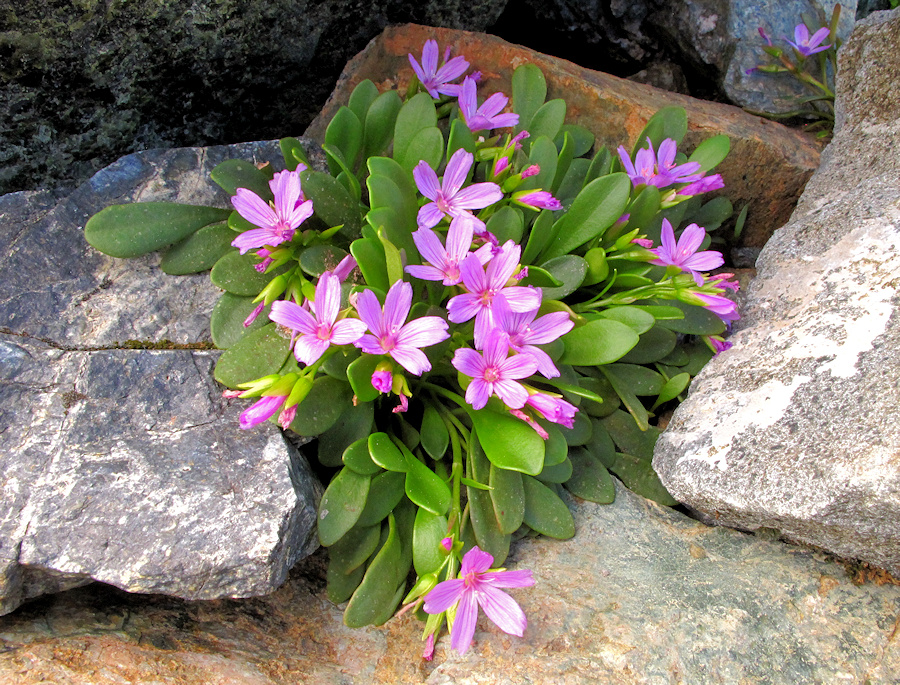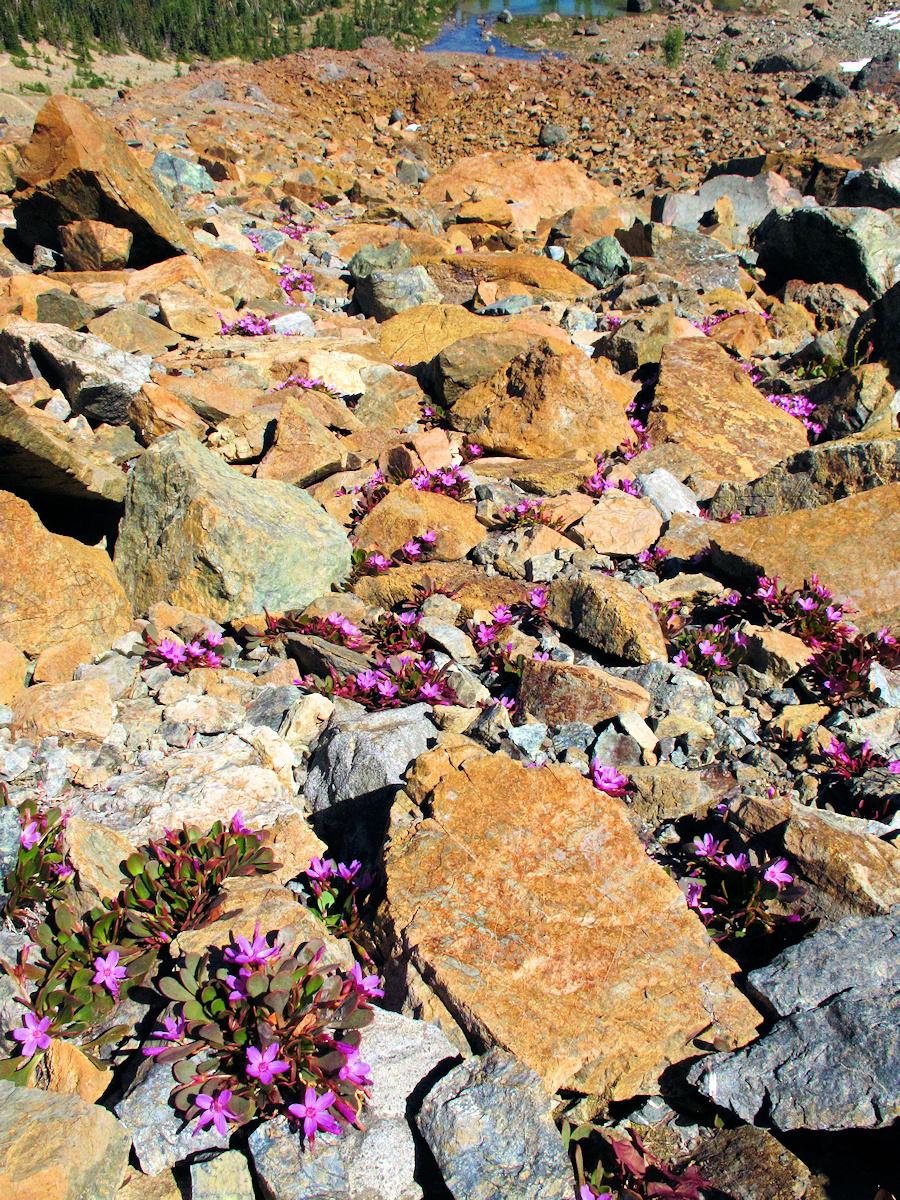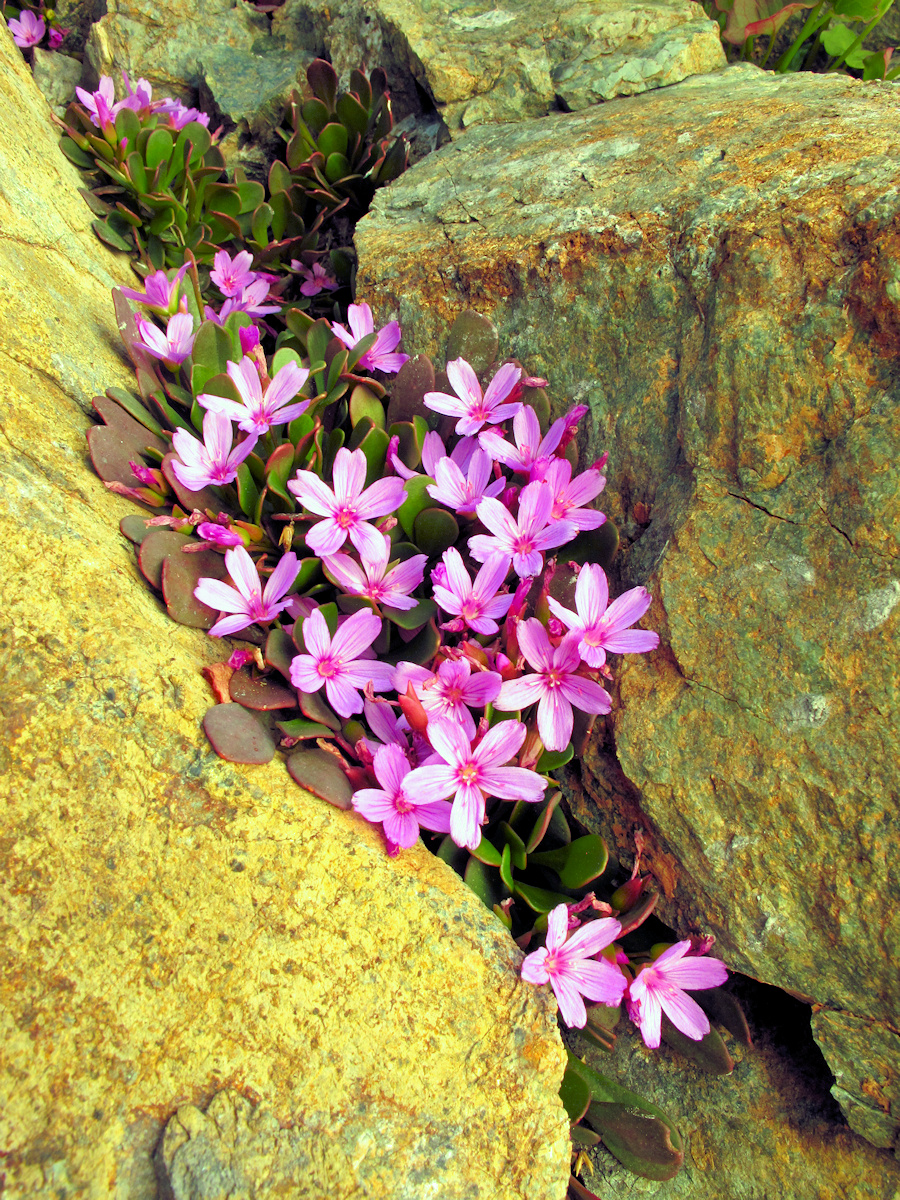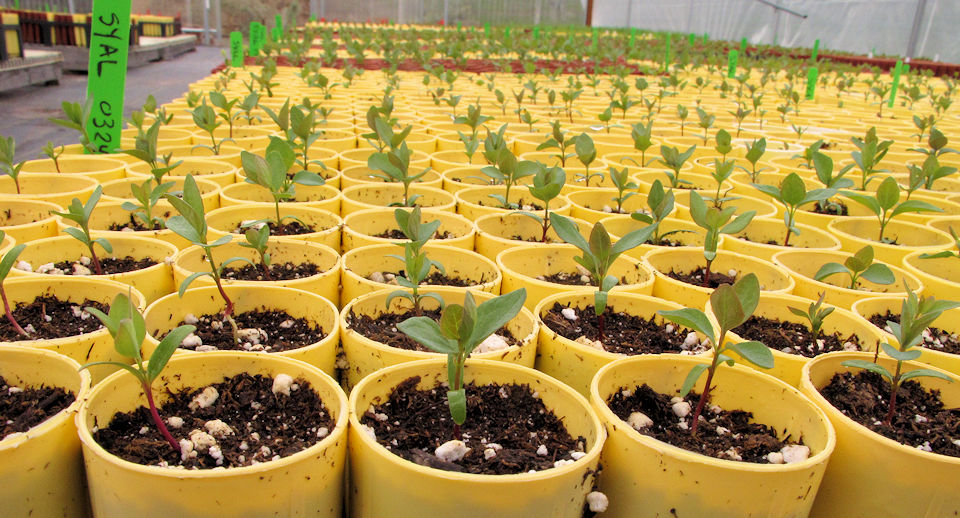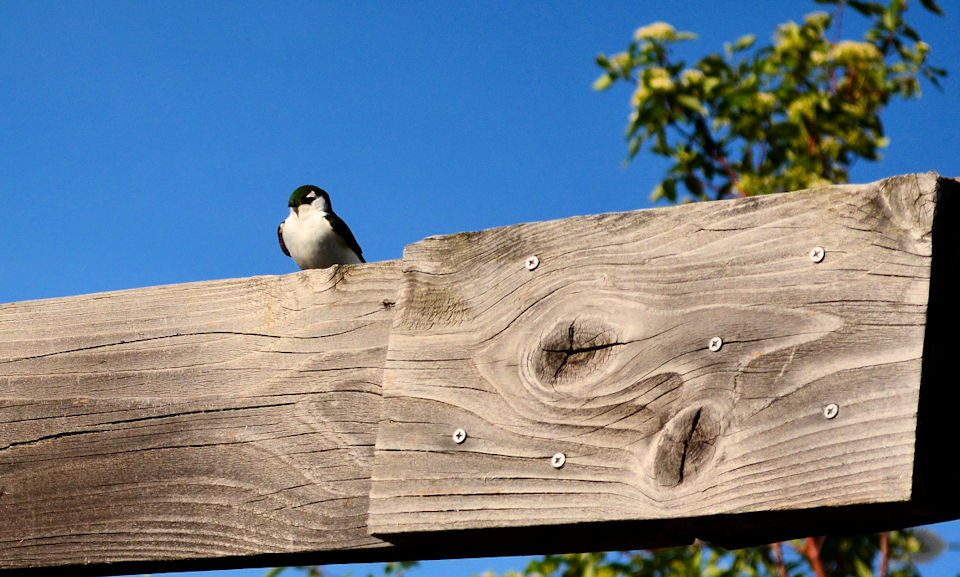Alpine Springbeauty – Wow!
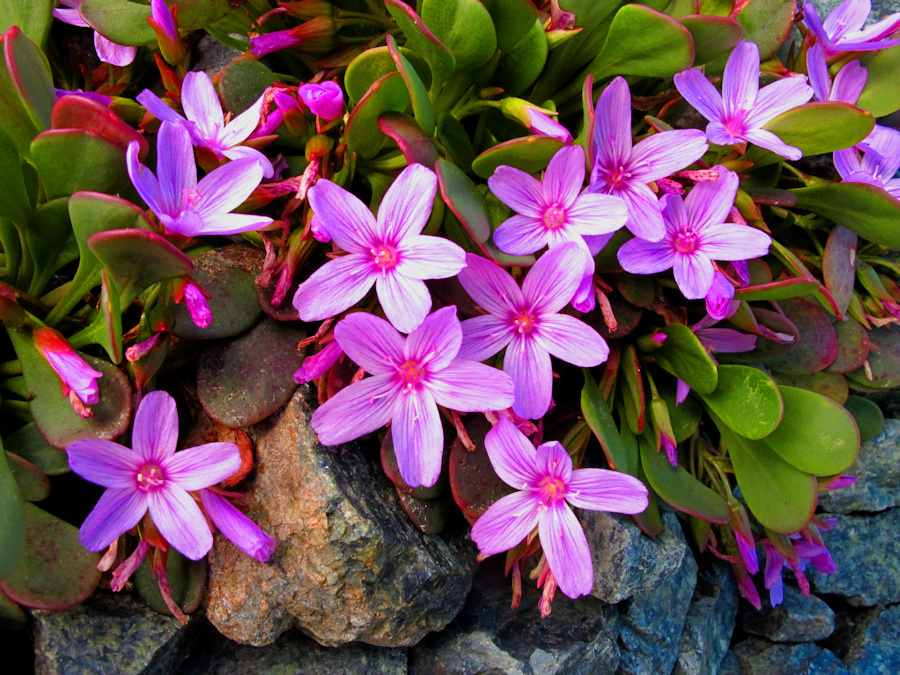
I don’t get botanical “Wow!” moments often, but last week I had one of them.
On Thursday I hiked to Van Epps Pass, past the Esmeralda Peaks at the head of the North Fork of the Teanaway River. This part of the Wenatchee Mountains has many areas of serpentine-derived soils, often covered with the rusty red or olive green rocks associated with these areas. These soils are low in nutrients and high in certain metals, and have a unique flora that can tolerate these conditions, so they are are often good areas to find endemic and uncommon plants. This rugged, alpine area, straddling the Kittitas and Chelan County lines, is the only area in the state where the alpine springbeauty (Claytonia megarhiza) is found.
I’ve hiked in this area before, and seen alpine springbeauty on Iron Peak, but hadn’t continued on the trail past Lake Ann. The descent to this small lake was through a largely barren area covered with talus comprised mostly of serpentinite rock, its shiny faces covered with many shades of greens and browns. On the upper slope I saw many C. megarhiza that were past flowering, with their black seeds apparent (I collected some, of course!). Turning the last switchback, I then found tens of thousands of the plants, displaying their lovely pink blooms, among the rocks. Striking! I hopped about among the rocks for quite a while, oohing and aahing.
Alpine springbeauty occurs elsewhere in the West, with discrete populations occurring from the Northwest Territories down to the Sierra Nevada and east to parts of the Rockies. This plant belongs to the family Montiaceae, which also includes the lewisias (including bitterroot and Columbia lewisia), the treasured Tweedy’s lewisia (Cistanthe tweedyi or Lewisiopsis tweedyi, depending on your preferred reference site) and the common, in Central Washington, lanceleaf springbeauty (Claytonia lanceolata), blooming in lower elevation forests in the spring. The alpine springbeauty, like other drought tolerant members of this family, develops a fleshy, long taproot that allows it to survive in the harsh sites in which it grows. The plant itself rarely exceeds 2-3″ in height and a large one may be only 8″ across. Hikers from Windy Pass in Chelan County south to the Teanaway drainage should be on the lookout, in areas of serpentine, for this alpine gem.
